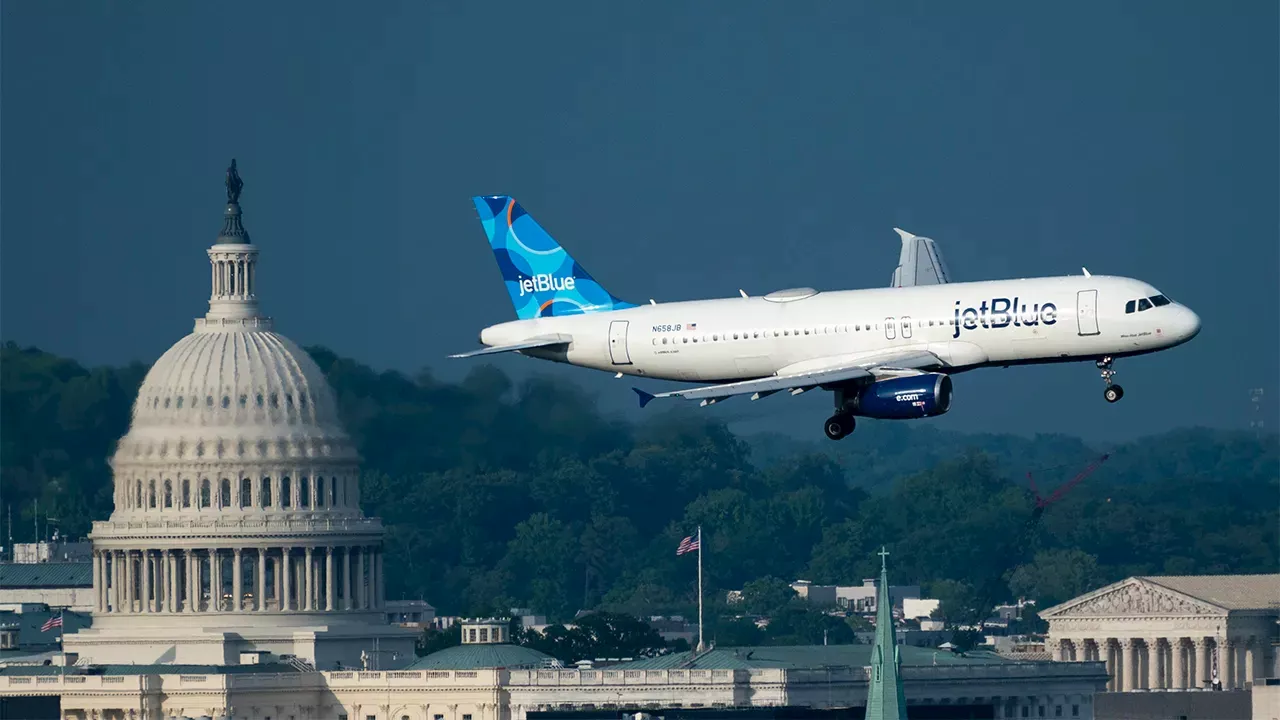This article explores the inherent safety challenges posed by Ronald Reagan National Airport in Washington D.C. The piece highlights concerns raised by lawmakers and aviation experts regarding the airport's congested airspace, short runways, and proximity to sensitive government buildings. The recent fatal collision of an American Airlines jet and a Black Hawk helicopter underscores these ongoing safety concerns.
Ask many of Congress' frequent fliers, and they'll tell you Ronald Reagan National Airport has sent up red flags for years. 'I've long been very, very nervous about congestion at Reagan National,' said Sen. Tim Kaine, D-Va. 'The congestion of the airspace around Reagan and D.C. as a whole definitely played a part in this,' said Sen. Tim Sheehy, R-Mont., a former firefighting pilot. 'The sheer number of aircraft in the air is as high as it's ever been.
' 'A lot of aircraft transit up and down the Potomac,' said Sen. Mark Kelly, D-Ariz., a former Navy combat pilot and astronaut. 'Getting in and out of certain areas. The Pentagon. Other military installations. Reagan right there in that highly trafficked area.' 'Whenever I'm at Reagan and I see new gates being built, the terminal getting larger, I realize that there will never be another inch of runway. The skies are pretty congested,' said Sen. Kevin Cramer, R-N.D. 'I often think there's too much activity for this small plot of land. And I'm sure there'll be a reevaluation of all of that.'The nation’s worst air disaster in nearly a quarter-century spilled into the Potomac River just short of Washington’s Reagan National Airport on Wednesday night. Sixty-seven people died after American Eagle Flight 5342 from Wichita, Kan., collided with an Army Sikorsky Black Hawk helicopter feet from the runway. Aviation experts say flying in and out of Reagan National is one of the most complicated airports in the country. The approach from both the north and south is over water. Pilots must navigate a narrow corridor above the river – but not fly over the nearby Pentagon. That’s to say nothing of piercing Washington, D.C.’s super-protective airspace. The White House and U.S. Capitol are clearly visible when planes take off to the north. Moreover, the airport is known for notoriously short runways. The runway on which the American Eagle flight attempted to land stretches a little more than 5,200 feet. Slightly less than a mile in length. That’s not even the main runway. Standard commercial runways average around 13,000 feet. The longest runway at Reagan National is about 7,000 feet. Plus, all three runways cross one another. Such a configuration is rarely seen at modern airports. Last spring, there were two incidents where planes nearly crashed into one another while crossing runways. The runways are some of the most overused in the entire American flight system. The airport was designed to handle 14 million passengers annually. But that number spiked to 25 million in 2023. The airport accommodates a staggering 800 takeoffs and landings each day. There were efforts to close Reagan National when Dulles International Airport opened in 1962. Dulles is a monstrosity of a campus. However, it resides nearly 30 miles from Washington, D.C., proper. The nation’s movers and shakers never gravitated to Dulles when it was so easy to fly into Reagan National, deplane, catch a cab and arrive at the State Department for a meeting 15 minutes later. Lawmakers, aviation, national security officials and the Secret Service conducted serious conversations about permanently closing the airport after 9/11. It was thought that air traffic in and out of Reagan National posed too much of a risk to the seat of government. It wouldn’t take much for hijackers to commandeer an aircraft and reroute it to Capitol Hill. After all, one plane crashed into the Pentagon on 9/11. The fourth plane – which went down in a field near Shanksville, Penn. – was ultimately bound for the Capitol. That said, advocates for maintaining Reagan National argued it was nearly impossible to hijack a plane taking off and immediately send it barreling toward the Capitol. It takes a while to engineer a hijacking. There was simply not enough time to execute such a plan seconds after takeoff. Still, authorities shuttered Reagan National for more than three weeks following 9/11. New safety rules were in place once the airport re-opened. Planes couldn’t have more than 156 seats. All passengers were required to be seated a half-hour before landing. Air marshals patrolled most if not all flights in and out of the airport. The feds loosened many of those restrictions anywhere from a few months to nearly four years after 9/11. But that didn’t diminish questions about the safety of this particular airport. However, proponents of maintaining Reagan National had some of the most powerful allies in the nation: Members of Congress. Lawmakers keep insane schedules. In fact, the invention of the jet airplane contributed to such bedlam
Reagan National Airport Air Traffic Safety Concerns Runway Congestion Air Disaster Washington D.C.
United States Latest News, United States Headlines
Similar News:You can also read news stories similar to this one that we have collected from other news sources.
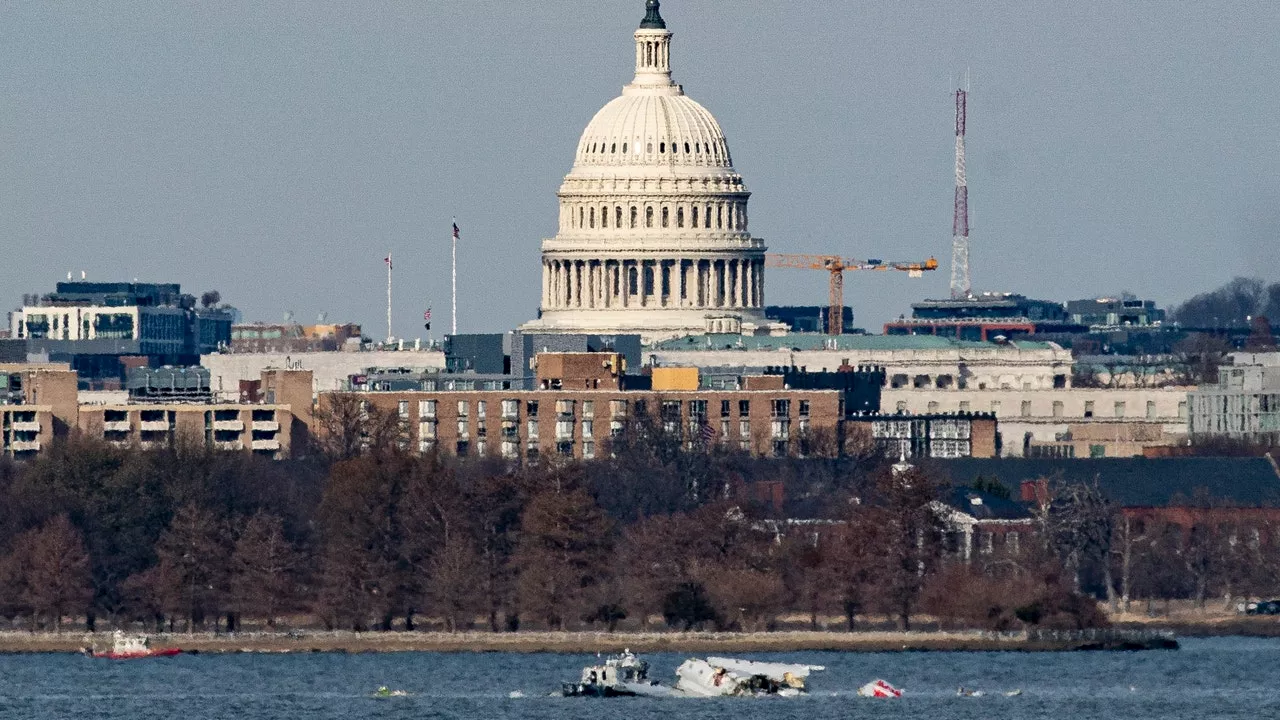 Reagan National Airport Crash: Staffing Issues and a National TragedyA fatal plane crash at Reagan National Airport on Wednesday night has sparked an investigation into potential staffing issues at the air traffic control tower. The American Airlines jet collided with a helicopter, resulting in no survivors. The president addressed the nation, offering condolences and pledging to investigate the cause of the crash.
Reagan National Airport Crash: Staffing Issues and a National TragedyA fatal plane crash at Reagan National Airport on Wednesday night has sparked an investigation into potential staffing issues at the air traffic control tower. The American Airlines jet collided with a helicopter, resulting in no survivors. The president addressed the nation, offering condolences and pledging to investigate the cause of the crash.
Read more »
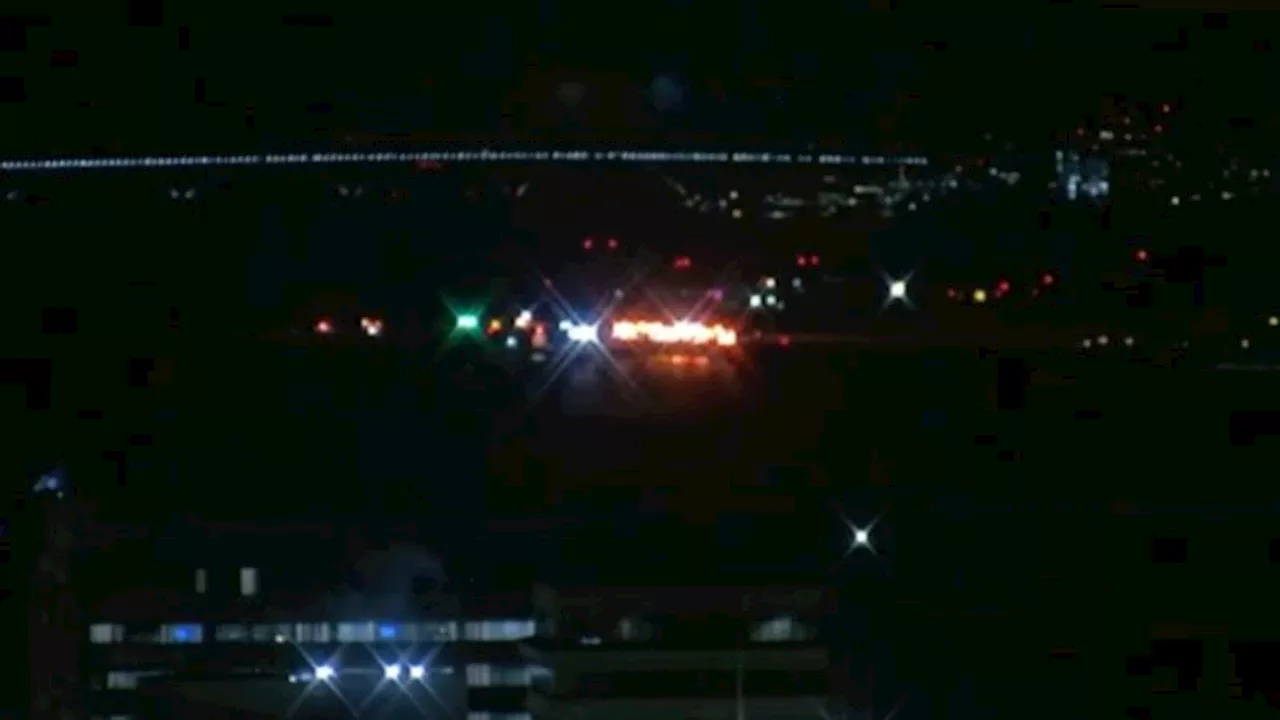 Passenger Plane Crashes into Potomac River Near Reagan National AirportA passenger aircraft collided with a helicopter and crashed into the Potomac River near Reagan National Airport in Washington, DC on Wednesday evening. The Federal Aviation Administration (FAA) confirmed the incident, stating that the plane, American Airlines Flight 5342, was en route from Wichita, Kansas. The White House confirmed that a military helicopter was involved. All takeoffs and landings at Reagan National Airport have been halted as emergency personnel respond to the scene. Search and rescue operations are underway.
Passenger Plane Crashes into Potomac River Near Reagan National AirportA passenger aircraft collided with a helicopter and crashed into the Potomac River near Reagan National Airport in Washington, DC on Wednesday evening. The Federal Aviation Administration (FAA) confirmed the incident, stating that the plane, American Airlines Flight 5342, was en route from Wichita, Kansas. The White House confirmed that a military helicopter was involved. All takeoffs and landings at Reagan National Airport have been halted as emergency personnel respond to the scene. Search and rescue operations are underway.
Read more »
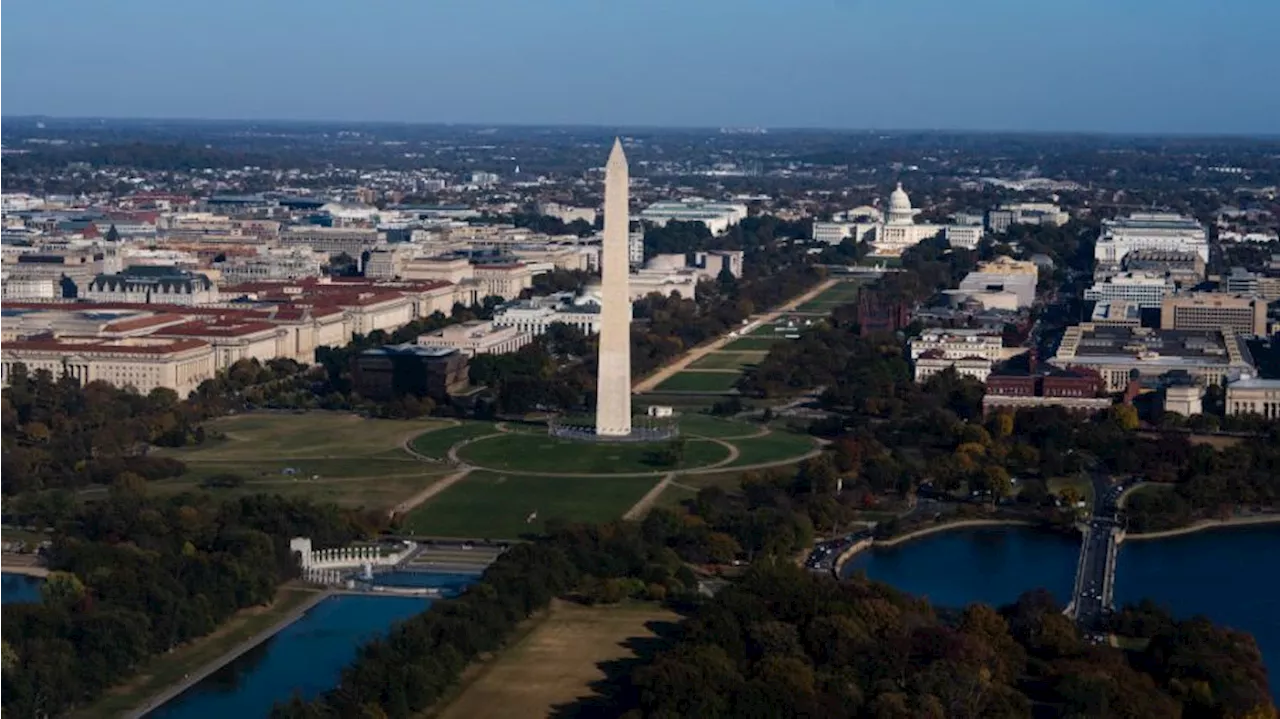 Ronald Reagan National Airport Halts Operations After CrashRonald Reagan National Airport near Washington, D.C. has halted all takeoffs and landings following a reported aircraft crash nearby. D.C. Fire and EMS confirmed the incident, stating that a small aircraft went down near the airport and fireboats were on the scene.
Ronald Reagan National Airport Halts Operations After CrashRonald Reagan National Airport near Washington, D.C. has halted all takeoffs and landings following a reported aircraft crash nearby. D.C. Fire and EMS confirmed the incident, stating that a small aircraft went down near the airport and fireboats were on the scene.
Read more »
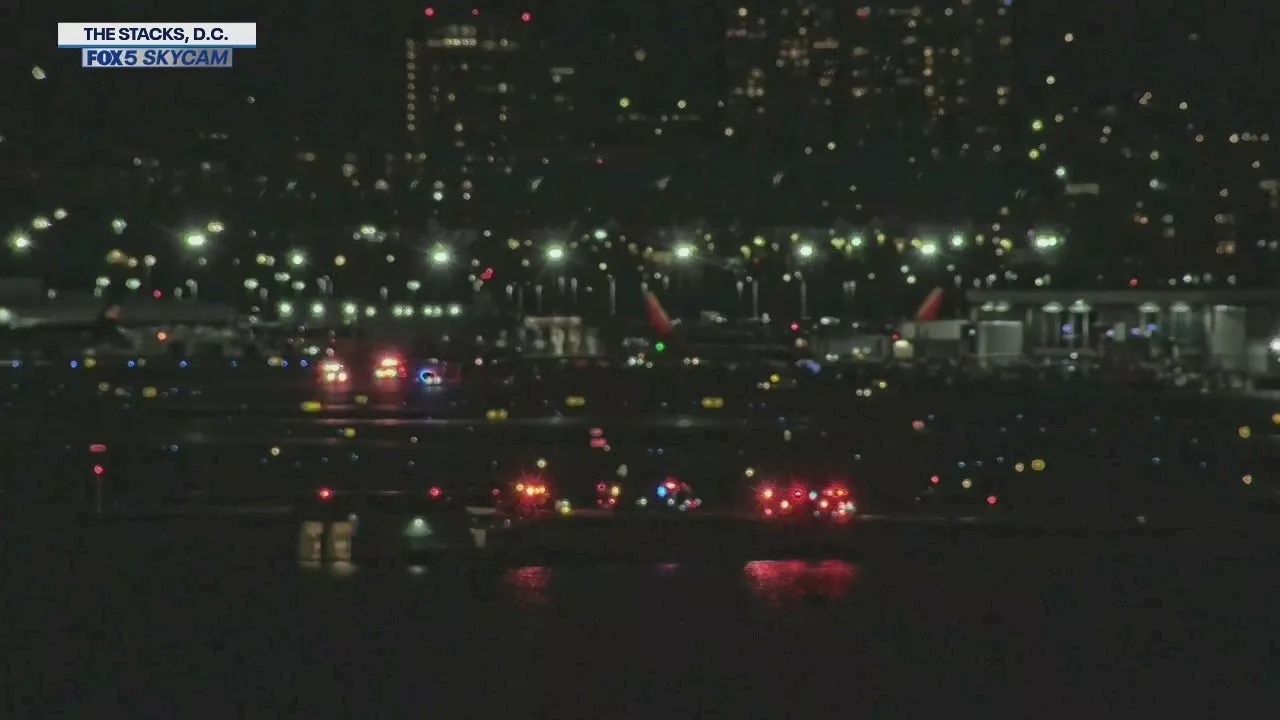 Plane and Helicopter Collide Near Reagan National AirportA multi-agency search and rescue operation is underway in the Potomac River following a collision between a small American Airlines aircraft and a military helicopter near Reagan National Airport. The incident occurred at approximately 8:53 p.m. local time, prompting a response from the D.C. Metropolitan Police Department, D.C. Fire and Emergency Medical Services, and other partner agencies. All takeoffs and landings out of DCA have been halted.
Plane and Helicopter Collide Near Reagan National AirportA multi-agency search and rescue operation is underway in the Potomac River following a collision between a small American Airlines aircraft and a military helicopter near Reagan National Airport. The incident occurred at approximately 8:53 p.m. local time, prompting a response from the D.C. Metropolitan Police Department, D.C. Fire and Emergency Medical Services, and other partner agencies. All takeoffs and landings out of DCA have been halted.
Read more »
 Plane crashes into helicopter while trying to land at Reagan National AirportA PSA Airlines Bombardier CRJ700 regional jet collided with a Sikorsky H-60 helicopter, the FAA said. Reagan National Airport has grounded all flights.
Plane crashes into helicopter while trying to land at Reagan National AirportA PSA Airlines Bombardier CRJ700 regional jet collided with a Sikorsky H-60 helicopter, the FAA said. Reagan National Airport has grounded all flights.
Read more »
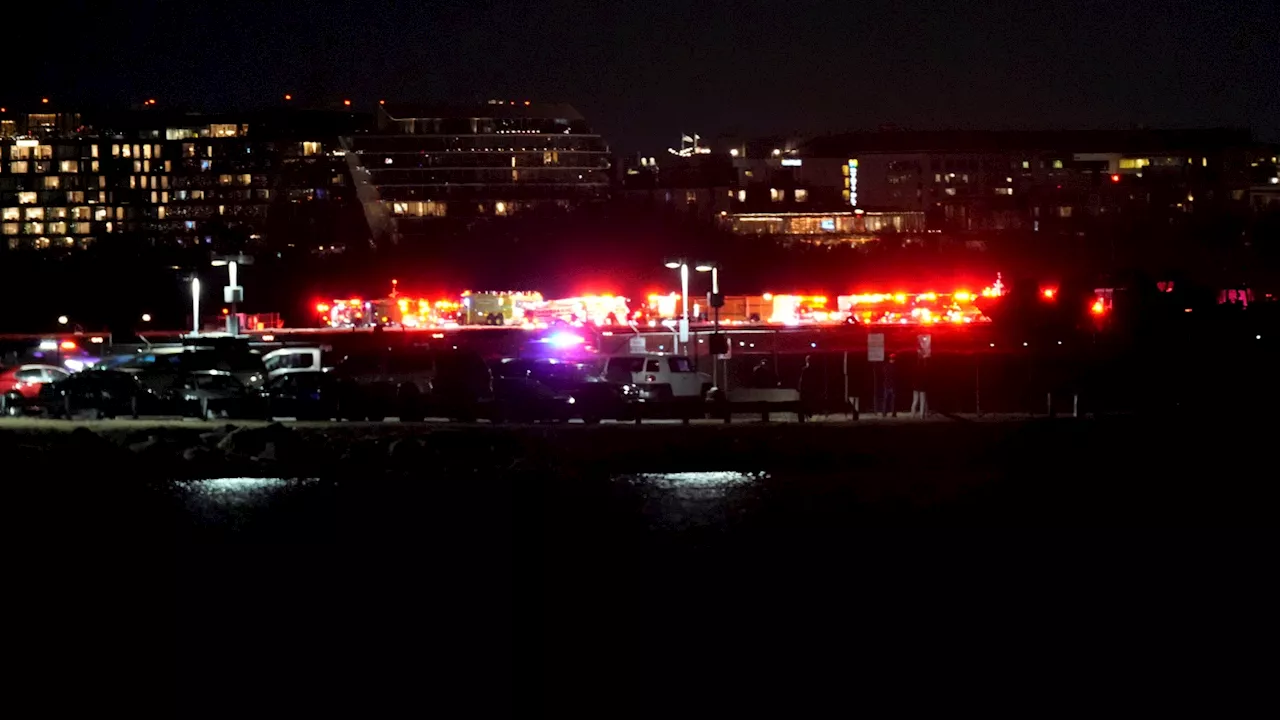 Plane Crashes Near Ronald Reagan Washington National Airport After Mid-Air Collision with HelicopterA PSA Airlines Bombardier CRJ700 regional jet crashed near Ronald Reagan Washington National Airport in Virginia on Wednesday evening after colliding with a U.S. Army Blackhawk helicopter during its approach. The FAA is investigating the incident, which resulted in the suspension of all takeoffs and landings at the airport. Emergency personnel are on the scene, and a multi-agency search and rescue operation is underway.
Plane Crashes Near Ronald Reagan Washington National Airport After Mid-Air Collision with HelicopterA PSA Airlines Bombardier CRJ700 regional jet crashed near Ronald Reagan Washington National Airport in Virginia on Wednesday evening after colliding with a U.S. Army Blackhawk helicopter during its approach. The FAA is investigating the incident, which resulted in the suspension of all takeoffs and landings at the airport. Emergency personnel are on the scene, and a multi-agency search and rescue operation is underway.
Read more »
